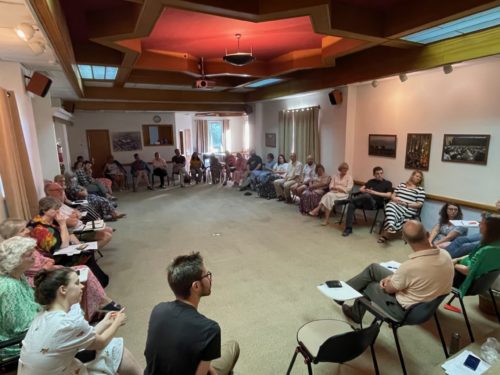Introduction to the Bible Lands (Basic Course)
The Introduction to the Bible Lands course visits key biblical sites from the Old and New Testaments, including a few places not commonly on our Footsteps of Jesus and Palestine of Jesus courses. Our shortest study pilgrimage (8 full days), the course traverses the principal regions and landscapes of the Holy Land in Israel and the West Bank, visiting archaeological parks, church sites, and museums. Integrating education and spirituality, the course consists of lecture briefings and on-site teaching as well as time for reflection, prayer, and worship. The course includes a two-day / one-night trip to the Galilee (For an advanced course, see The Bible Lands: Level 2 which will be offered in 2024).
Aims of the Course
- To acquire an (introductory) empirical knowledge of the biblical topography of Israel and Palestine;
- To explore the historical contexts and (selected) biblical archeology of the Old and New Testaments;
- To experience in place the landscapes and narratives of the Bible;
- To explore the Holy Land as Christian pilgrims by integrating biblical, historical, and contemporary studies with spiritual reflection;
- To encounter the storied landscapes of the Land of the Holy One as they pertain to Jews, Christians, and Muslims;
- To engage the local Christian community, to explore contemporary issues in Israel and Palestine, to engage Jewish and Muslim perspectives, and to reflect theologically on these issues;
- To return home renewed in faith, in ways that enhance life, faith, and communities back home;
- To share with others the experience of the Holy Land, its peoples, problems, hopes, and prayers.
Content of the Course
While each iteration of the course varies depending upon local and seasonal circumstances, the course draws upon the following places:
- Biblical Jerusalem from the First and Second Temple periods (i.e., from the time of David and Solomon through to Jesus’ day), including the City of David and the remains of Herod’s Temple complex as well as Holy Week commemorations (Gethsemane, the Way of the Cross) and the Holy Sepulchre (the place of the death and resurrection of Jesus).
- Biblical Judea, including the place of Jesus’ birth in Bethlehem as well as possibly Hebron and/or Herodium.
- Biblical Samaria, including the possibilities of Shiloh, Mt Gerizim, Jacob’s Well, Ancient Shechem, and/or Sebastia,
- The Jordan River Valley, including the Judean Wilderness, the Jordan River, Ancient Jericho, and/or the Dead Sea. The site of Christ’s baptism, where there is an opportunity to renew baptismal vows.
- The Lower Galilee and the Jezreel Valley, including Jesus’ childhood home and the site of the Annunciation in Nazareth.
- The Sea of Galilee, including sites and commemorations, such as Capernaum, associated with Jesus’ adult ministry.
- When possible, the Upper Jordan River Valley (Hula Valley) which includes the source of the Jordan River, Caesarea Philippi, and the ancient city of Dan, the northern most city of Ancient Israel
- Additional archeological sites, including the Israel Museum.
For questions about the course program, please contact our course director, Rodney Aist, coursedirector@sgcjerusalem.org






